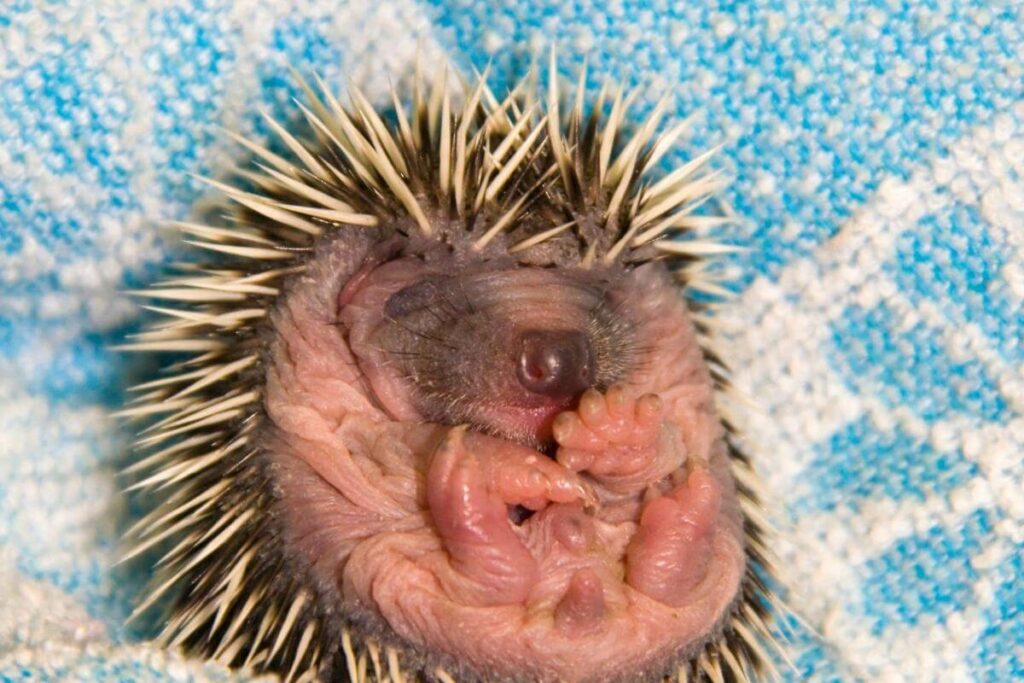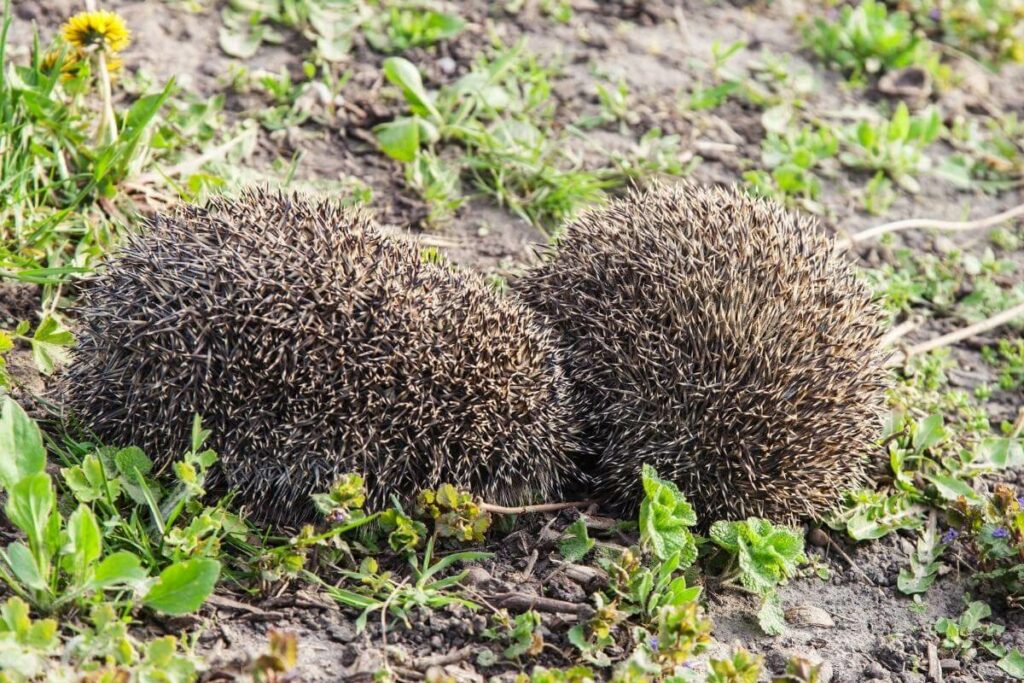Hedgehogs are interesting creatures; in fact, if you’re looking for a low-maintenance pet, this is definitely one to consider.
Just like other animals, hedgehogs give birth to babies, called hoglets, then proceed to take care of them until they can be out on their own, which doesn’t take long at all.
In their second year of life, hedgehogs reach maturity.
Because of this, they are able to breed and usually do so every year until their death.
If you’re wondering when hedgehogs give birth, here’s the answer:
Most females hedgehogs give birth in June, and some will also give birth in early fall. The early fall babies don’t always survive the winter because they don’t have enough time to build up the body weight they need to sustain them through the winter. When they give birth in June, they usually birth from four to seven hoglets, who are with their mothers for only a few weeks before joining them to forage for food.
The Timeline of Hedgehog Breeding

In case you’d like to know what hedgehogs do throughout the year, here is their usual timeline:
- January to February: At this point, most hedgehogs will be in hibernation. They are mostly inactive unless they are disturbed or if the weather turns unusually mild.
- March: Hedgehogs start to come out of hibernation. They can lose roughly one-third of their body weight while hibernating, so their main goal at this point is to eat as much as possible.
- April: Hedgehogs at this point normally do two things. First, they are trying to build up the body fat they lost over the winter. Second, they start looking around for good nesting sites.
- May: The mating season begins. Males circle the females until one agrees to mate, then they leave and have no part in the rearing of their young.
- June: The female hedgehogs are pregnant for around four weeks, then give birth. When the hoglets are too young to leave the nest, the mother forages then returns to feed them.
- July: When the hoglets are three to four weeks old, they join their mother on foraging trips. They learn what to eat and what not to eat but also return to the nest for mother’s milk.
- August: The hoglets prepare for independence and start exploring on their own, usually without ever encountering their siblings.
- September: Some females give birth a second time in September or October. However, these babies aren’t as likely to survive the winter as the ones born in June.
- October: Hedgehogs once again start to eat a lot and build their nests in order to get ready for hibernation.
- November to December: Most hedgehogs start the hibernation process in November, which for most of them will last until March.
This is the life of the average hedgehog.
If there is an unusually mild winter, the hoglet season could begin in early spring and continue until the fall.
Even though the mothers can give birth to up to seven hoglets at a time, they usually only wean two to three of them successfully.
What happens then?
Less-known Facts: Many times the mother will desert or even eat the hoglets, especially if she is somehow disturbed. Mothers have even been known to carry a hoglet in her mouth to a new location and leave it there.
What Is Their Mating Practice Like?
When they mate, the male hedgehogs participate in snorting and puffing that is rhythmic and often involves a type of circling behavior.
Because of the noise it makes, rival males will come to the scene and begin fighting with one another.
Often, the hedgehogs chase one another and even head-butt one another in order to win over the female.
If you live in an area where hedgehogs are close by, you’ll actually be able to hear this commotion because it is quite loud.
To mate, the female adopts a body position that includes flattening her spines, then the male mounts her from behind.
One interesting fact about hedgehogs is that for both males and females, promiscuity is very common.
In fact, it is quite common for both male and female hedgehogs to have more than one mate in a single season.
When the hedgehogs give birth, it normally takes about two minutes, although at times it can take several hours.
When the babies are born, they weigh less than an ounce each.
Interesting Tidbits About Hedgehogs

Besides giving birth only once and sometimes twice a year, there are other interesting facts about hedgehogs that you likely didn’t know.
Here are a few of them:
- Hedgehogs can lose their quills under certain circumstances. In addition, baby hedgehogs lose their baby quills and then grow adult quills, just as humans do with teeth!
- If you hear a huffing or puffing sound coming from your pet hedgehog, this means that it’s a happy camper. On the other hand, hissing or clicking sounds usually means that they’re not happy at all.
- Hedgehogs enjoy a varied diet, and many pet owners feed them cat food. But if you want to give your hedgehog a special treat he’ll love, throw in a cricket or mealworm occasionally!
- Hedgehogs can float! If you put them in water, they’ll curl up in a ball and float on their backs. If you go to YouTube, you can find cute videos of hedgehogs floating in water during bath time.
- Hedgehogs seem to be immune to snake venom, at least with most snakes. They have a protein in their muscles that enables them to be bitten by a snake and not die from it.
Final Thoughts
Not only did you find out when hedgehogs bring babies into the world and the breeding timeline, but you also found out few strange facts about these fascinating little creatures.
Related Articles
- Are Hedgehogs Messy?
- Why Do Hedgehogs Curl Up In a Ball?
- I Have a Hedgehog in My Garden, What Do I Do?


